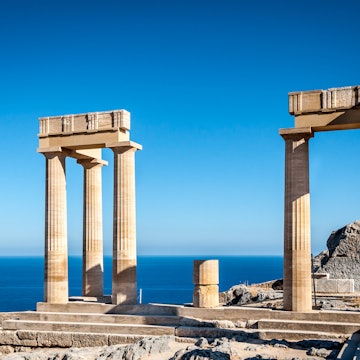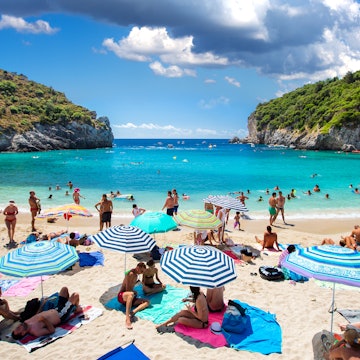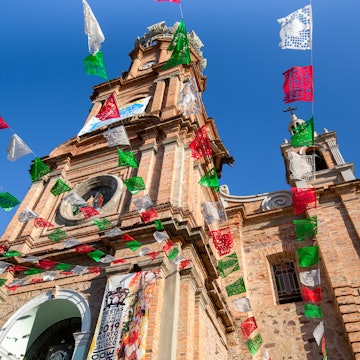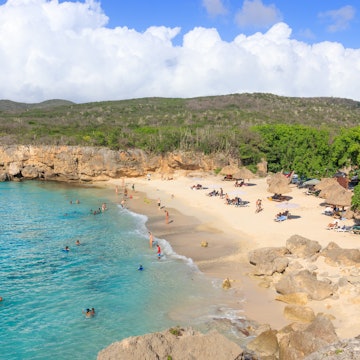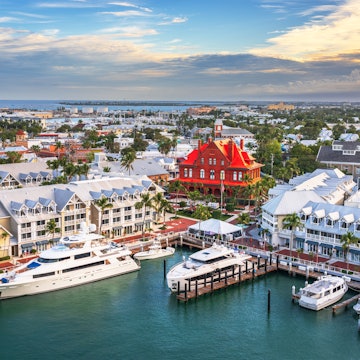

Skiing in spring is completely different from in the middle of winter: slopes are sunny and warm and there's always a great party atmosphere. The French resort of Val d'Isère is ideally suited for late-season skiing, with lots of high-altitude runs, north-facing slopes and plenty of snow cannons to keep the pistes in peak condition. It's also a fantastic destination if you're looking for fun away from the slopes, with notorious après-ski parties.

Snow-sure slopes guaranteed
With an altitude of 1850 metres above sea level, Val d'Isère is one of Europe’s highest ski resorts, offering a plethora of soaring slopes spread between 2300 and 3400 metres. Many of the ski areas are north-facing, which means they stay out of the sun for longer, retaining their snow better. In addition, 40 percent of Val d'Isère’s pistes are equipped with snow cannons, allowing the natural snow to be topped up with artificial powder created by blasting water droplets into the freezing air. All of this means that the resort’s ski lifts can reliably remain open right through March and April until the first day of May.

Making the most of spring snow
With warmer temperatures and longer days, skiing in the springtime has many advantages, but also requires a little know-how. As the days wear on, the warmth of the sunshine melts the snow, leading to slushy conditions on lower and sun-drenched slopes. Sub-zero temperatures at night then mean everything freezes, which can lead to icy conditions first thing in the morning. The best conditions lie in between, when the top layer of snow has been warmed enough by the sun that it is no longer icy, but before the lower layers start to soften.

Those in the know time their skiing carefully, aiming to hit slopes around half an hour after the sun does. East-facing slopes get the sun first, followed by south-facing slopes and then west-facing ones. After lunch only north-facing or very high slopes are worth trying. In Val d'Isère this means heading to the Solaise area first, followed by Bellevarde and La Daille, and saving the highest area above Le Fornet near Pissaillas glacier for the afternoon. Read the resort's ice spot map to get your timings right.
Even off-piste skiing isn’t out of the question in springtime, if you know what you’re doing. Under the right conditions granular corn snow is formed, which can be as enjoyable to ski as powder. Again, timing is everything and there can be significant danger of avalanches, so it’s a good idea to go with a mountain guide who can take you to the best spots and make sure you’re safe.

Skiing suitable for all levels
Val d'Isère is a superb destination for intermediate and advanced skiers. In combination with its sister-resort of Tignes, it is part of the massive Espace Killy ski area, named after Olympic champion ski racer Jean-Claude Killy, who grew up here. Anyone who enjoys roaming across a large area and discovering new slopes every day will love skiing here. There are plenty of challenges too: the legendary Face de Bellevarde black run, created by Killy himself, was used for the downhill skiing competition at the 1992 Olympics. The best time to tackle the long, steep run is in the morning when the snow is freshly groomed and moguls haven’t had a chance to develop.

Val d'Isère has never really been regarded as a good resort for beginners, as many of the runs – particularly those into the village itself – are relatively tricky. Things changed recently, when the area at the top of the Solaise lift was redeveloped into a large new beginners ski area. Instead of spending their first few days on slushy nursery slopes at the foot of the mountain, newbies can now get the hang of their first snowplough turns whilst experiencing the same mountain views and ambience as everyone else. A super-speedy new 10-person gondola, complete with heated seats and wi-fi, whisks skiers up to the ski area from the main resort where two magic carpets make using the nursery slopes easy. And once they’ve mastered the basics, beginners can branch out onto the surrounding green and blue pistes, all covered by a special reduced-rate beginners ski pass.
Après-ski party atmosphere
But let’s be honest — skiing in springtime isn’t all about the skiing. The sun’s out, the music’s pumping and a carefree, fun-loving atmosphere suffuses the whole mountain. Days are longer, but the snow conditions start to get heavy and slushy in the mid-afternoon, so the après-ski parties start earlier and go on longer.

Val d'Isère is home to La Folie Douce, one of Europe’s most legendary après-ski venues, located right up on the mountain at the top of the Daille telecabine lift. Skiing down the piste towards La Folie Douce, you can hear the heavy bass throbbing before you crest a ridge and see the cluster of wooden buildings buzzing with an ever-growing swarm of brightly dressed revellers. DJs, singers, dancers, acrobats and musicians perform on the rooftop stages, whilst below the crowd dances enthusiastically on the tables in their ski boots, creating the atmosphere of a massive open air nightclub, surrounded on all sides by mountain peaks. Drinks aren’t cheap, but it’s worth it to see where the legendary après-ski chain (which now has five venues across the French Alps) began.
Once La Folie Douce starts to wind down you can choose whether to take the lift down or take your chances dodging inebriated skiers on the resort runs. The party continues in the village, with plenty of lively bars and clubs to choose from.
Anna Tyler travelled to Val d'Isère with support from the Office du Tourisme Val d'Isère. Lonely Planet contributors do not accept freebies in exchange for positive coverage.







